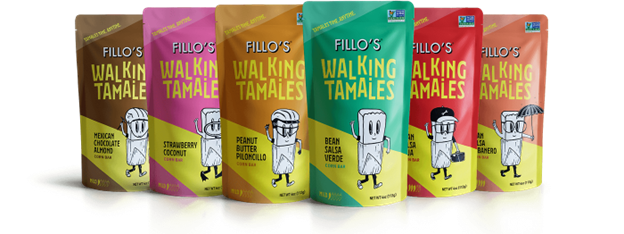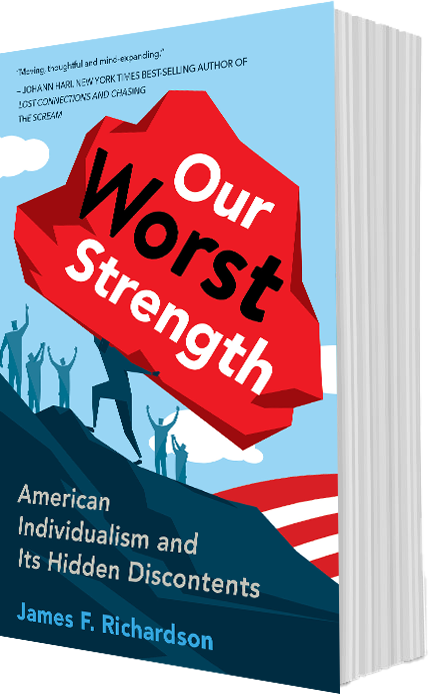Every once in a while, a consumer lawsuit reveals an underlying, slow-rolling social change that has re-defined most of America’s middle and upper-middle-class homes (~75% of the population). In this case, it’s a trend we’ve entirely forgotten because we’re so entitled to its benefits it is no longer a trend at all.
I think “it’ is now a civil right?
Last year, a Miami woman sued KraftHeinz for $5 million because her microwaveable Velveeta mac-n-cheese cup took far longer to prepare than the “ready in 3.5 minutes” the package promised. Her lawyers filed it as a false labeling lawsuit. - “The statement of ‘ready in 3 1⁄2 minutes’ is false and misleading…”
Convenience processed foods. Wow. What this industry has done to us as a culture. You would think these marketing promises were tantamount to the promise of “cheap land in the West” or something equivalent.
I don’t think anyone in 1953 could have foreseen that C.A. Swanson’s opportunistic invention of the frozen dinner (due entirely to a 500,000 lb. oversupply of Thanksgiving turkeys the year before)1 would create a suite of supermarket categories that, combined, would habituate 80% of the country to a standard of cooking time so ridiculously short it would make your grandmother or great-grandmother howl in envy. Remember, the Swanson frozen turkey dinner had to be baked in an oven f25 minutes!
25 minutes! Horrendous! Insufferable! Call my Senator!
The magic for 1953 consumers was that you didn’t have to do anything but heat up the meal. You could even…gasp…watch television while you “cooked” dinner!
Frozen Prepared Foods that require only heating are now a ~$20B market segment in the U.S.2 And growing. In fact, the entire segment’s baseline sales lifted like a tectonic thrust fault in the Spring of 2020 and, also like a thrust fault, the baseline sale of frozen foods have stayed right there. We eat more frozen prepared foods than ever before in America. We love them!
Boxed meal kits, including Kraft’s infamous mac-n-cheese, were a later category born of industrial food processing technology in the 1960s. Powderizing real cheese is actually not that easy to make, it turns out.
Then, there are the fresh meal take-home options from the supermarket deli. Why roast a chicken when you can have the store do it any night of the week and grab it on a mere whim?
Or what about the color-by-numbers, direct-to-consumer meal kit subscription brands such as Home Chef sent to your door at near-restaurant pricing (per person)? This 21st century idea is about re-introducing us to cooking, perhaps? But only if you shop and portion out all the ingredients and give us a Lego-style assembly manual.
Otherwise, no, we’ll have a frozen pizza or take-out.
If you go to your local supermarket and scan the various places where you buy something to avoid anything approaching actual cooking, the total ‘no-cook’ meal market probably amounts to 15-20% of our food-at-home spending—and more for those living alone or those living with ravenous, coyote-like teens. Our teenagers eat frozen meals and snacks daily. I eat them daily for lunch. God Save the Retort Pouch!
I’m way too busy to make a sandwich. Who has time for all that hand motion?
The issue many Americans have with cooking is our total insecurity about it. This insecurity is not overblown. For many, it stems from a) lack of domestic skills transmission after the 1960s (when Home Economics faded away in public high schools) and b) our worship of culinary celebrities who intimidate/fascinate us and c) our over-indulgence in menu diversity in America’s restaurants that have taught us that we can not possibly endure living inside a rotating list of 4-6 meals, but, instead, we must constantly seek “variety” often in meals we have no idea how to cook at all. According to the Hartman Group, only 16% of adults today classify themselves as ‘capable cooks.’’ ' ’3 What?! My four great-grandmothers from New Hampshire would be wide-eyed in horror, reading that sentence.
Even the children of incredibly capable South Asian, Filipino, Mexican, and Latin American immigrants have failed to ‘get trained.’ Why would you, growing up in this junk food, fast food nation?
This is a brief interruption to remind you to grab a copy of my new book, especially if you like this essay!
"Moving, thoughtful and mind-expanding."
— JOHANN HARI, NEW YORK TIMES BEST-SELLING AUTHOR OF LOST CONNECTIONS AND CHASING THE SCREAM
"An astute examination of loneliness and isolation that sheds light, finds humor, and provides hope."
— KIRKUS REVIEWS RECOMMENDED BOOK
". . . an invaluable book for understanding the hidden costs of American individualism."
— ROB HENDERSON, USA TODAY BEST-SELLING AUTHOR OF TROUBLED: A MEMOIR OF FOSTER CARE, FAMILY AND SOCIAL CLASS
"A moving portrait of the loneliness embedded in everyday American life and a powerful warning to younger generations to course correct."
— JENNIFER BREHENY WALLACE, NEW YORK TIMES BESTSELLING AUTHOR OF NEVER ENOUGH: WHEN ACHIEVEMENT CULTURE BECOMES TOXIC—AND WHAT WE CAN DO ABOUT IT
And now, back to our regularly scheduled post!
Let us review the evolution of precooked frozen food that eliminates anything resembling “cooking.”
There was the great frozen meal revolution of the 1960s.
Then, the microwaveable frozen meal revolution of the 1980s.
Then the microwaveable handheld frozen revolution of the 1990s brought cook times down to 2.5 minutes. Hot Pockets is the key brand here. My 14- year-old son once consumed roughly 1-2 truckloads of Hot Pockets a year. Hey, why are you laughing?
Then, in 2013, Sandwich Bros. of Wisconsin launched a new line of frozen pita pocket meals that reduced the heat time to 90 seconds with their yummy Chicken Melts (available at Costco).
Now, wait! I’m not done yet America.
I know a founder who has created a fantastic precooked Tamale that nukes hot in 30 seconds! It turns out that tamales have just about the perfect molecular composition for what food scientists call a “rapid thermal runway.” (I’ve waited ten years to deploy that phrase casually in a sentence, folks).
Are we reaching the singularity of convenience in hot meal prep time, folks? The frozen food singularity will occur at home, if anywhere. Even the 24/7 ready C-store roller dog requires you to walk/drive there to pick it up. How presumptuous of our time!
Scratch cooking still happens, folks, that’s true, but it’s on a long-term decline when viewed from the perspective of those who count meal occasions (and how they were prepared). Glib polling surveys dependent on respondent recall tend to overestimate scratch cooking because Americans have relaxed their definition of “cooking” quite a bit since my great-grandmother’s era and because we cannot recall habitual behavior accurately in surveys or interviews. We inflate ‘desirable/admirable’ behaviors in our memories.
We “cooked” more last week in our minds than in reality.
Years ago, when I spent most of my days wandering the pantries of America, I learned straight from the mouths of working Moms that convenient meal prep was about a meal with a low cognitive burden more than quick meal prep.
“Easy” beats “quick.”
Cognitive ease beats any other product attribute on specific occasions when the ‘cook’ is emotionally drained/wasted/brain fogged.
The ultra-quick, heat-in-package frozen products I mentioned above win on cognitive burden AND time. Boom. Boom. $20B in sales and climbing.
However, in a society where recent technologies for spreading processed food have raised expectations of food preparation speed and timeliness (see above), it shouldn’t surprise anyone that someone would be pissed at the bogus claim of 3.5 minutes of prep time on Velveeta’s packaging. It is an absolutely bogus claim, if you’ve ever made one of these microwaveable cups.
It’s just odd for someone to think they should be able to obtain more than a refund.
Or is it?
Does our heroine Maria have a broader point? Don’t. Insult. The. Consumer. Who. Is. Thy. God.
Look, folks, if you’re going to point to the Holy Sacrament of Convenience, make sure you really are convenient.
Thirty seconds is the new bar for heat-n-eat foods. Someone keeps moving the bar. Always. Moving. The Bar.
Oh hey, if you want two Walking Tamales for lunch, you can eat the first while heating the next one. Now, that’s some adept anti-cooking.
https://www.nationalgeographic.com/culture/article/how-leftover-turkey-launched-the-tv-dinner#:~:text=In%20the%20fall%20of%201953,with%20520%2C000%20pounds%20of%20turkey.
Frozen and Refrigerated Buyer Magazine, August 2022, page 6-8 cited on Statista.com
https://www.hartman-group.com/newsletters/108032734/american-meals-and-cooking-today-cooks-eaters-and-denizens








This idea that only 16% of American grown-ups consider themselves to be "capable cooks" took me so aback that I almost let the milk I was scalding to make my weekly batch of yogurt boil over. "It's nuts!" I thought to myself as I turned off the flame under the pot of milk, slicing carrots while sauteing the garlic and ginger in another to make the base for the curry. And that's what kept me from writing my reaction to this until today.
There are a few things going on here: One, the disposability consumer culture that this essay focuses on. There's also American individualism/anti-sociality: one key advantage of single-serve to-go meals is that you never have to worry about what, or when, anyone else is eating. 21st century Americans seem to have converted the social ritual of eating into a purely practical act of self-nourishment.
But another thing that I think is going on with the collapse of American home cooking is a collapse in focus. Much has been written about the declining modern attention span, the victim of social media pings hacking brain pathways. I'm no chef, but being even a competent home cook requires enough focus for me to whisk with one hand and pour with another. It also requires me to keep paying attention even when something is boring for whole seconds or minutes at a time: I need to keep watching the thermometer in the pot of milk; I need to keep stirring the roux until it turns caramel-brown, and I can't just check in on Instagram real quick if I'm bored while I'm stirring. Can real social media addicts do that, I wonder?
Anyway, I thought I'd add my two cents to this discussion while eating my cup-o-noodles at my desk at work.
I knew our civilization was doomed when Uncrustables hit the market.
When people find a peanut butter and jelly sandwich - LITERALLY THE EASIEST THING TO MAKE, I was adept at making PB&J's by age five, including cutting off the crusts - to be just Too Much Work, that is a sign that we are living in the end times.